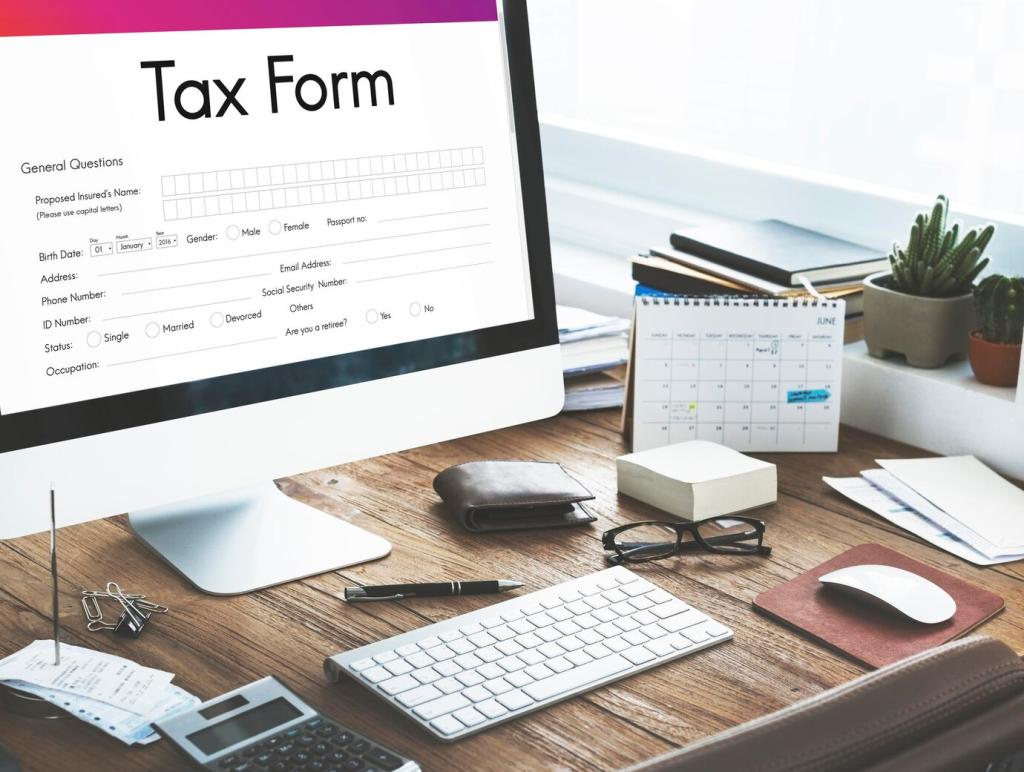
Chosen Theme: Tax Deductions and Benefits for Indian Business Owners
Welcome! Today we dive into Tax Deductions and Benefits for Indian Business Owners, with relatable stories, practical checklists, and smart, compliant tactics you can act on this week. Follow along, ask questions in the comments, and subscribe for fresh, India-focused tax insights tailored to founders, freelancers, and growing teams.



Depreciation Strategies That Protect Cash and Profits

Group assets into blocks, apply the applicable rate, and track additions and deletions carefully. Mid-year purchases may qualify for half-year rules. A simple asset register with serial numbers, installation dates, and invoices provides audit confidence and avoids missed depreciation every single year.
Hiring Incentives: Turn Payroll into a Tax Advantage
When Priya in Pune documented onboarding for ten new factory workers—compliant PF, minimum days, and salary thresholds—her company claimed the additional deduction and unlocked room for training. She credits a neat HR file and payroll discipline. Curious how this could work for you? Ask below.
Hiring Incentives: Turn Payroll into a Tax Advantage
Employees must meet eligibility criteria and minimum employment days, with proper payroll, banked salaries, and statutory compliances. Contractors typically do not qualify. Keep appointment letters, attendance systems, and wage ledgers synchronized. Subscribe for our onboarding checklist tailored to 80JJAA claims.

Startup Advantages: Section 80-IAC and ESOP Relief
Subject to conditions, eligible startups may claim a 100% deduction of profits for three consecutive years within a defined window. Track incorporation dates, recognition status, and turnover limits meticulously. If you are weighing the timing, share your scenario and we will suggest a planning angle.


Startup Advantages: Section 80-IAC and ESOP Relief
Qualifying startups can enable employees to defer tax on ESOP perquisites until specific trigger events. Maintain valuation reports, grant letters, and cap table trails. This can be a talent magnet when cash is tight. Comment if you want a plain-English walkthrough of ESOP tax points.
Small-Business Shortcuts: Presumptive Taxation under 44AD and 44ADA
Presumptive works when margins are steady, books are simple, and compliance bandwidth is limited. Avoid it if you have thin margins, future fundraising plans, or wish to claim robust expense deductions. Tell us your turnover and margin context, and we will discuss fit.
Recent changes increased threshold limits for eligible businesses and professionals when cash receipts stay minimal. Keep receipts digital, banked, and traceable. The more you formalize collections, the more likely you qualify. Share your collection mix, and we will help strategize compliance.
Ravi, a consultant from Ahmedabad, switched to 44ADA after clients insisted on quarterly retainers. He trimmed bookkeeping hours by half and planned taxes monthly. Simplicity freed mental bandwidth. If you juggle variable invoices, comment and we will map a cadence that actually sticks.
GST Input Tax Credit: The Silent Profit Booster
Match purchase invoices with GSTR-2B, confirm supplier filings, and track goods receipt dates. Set monthly cut-offs and chase discrepancies early. A short Friday checklist—review, reconcile, resolve—keeps refunds real and cash flow sane. Comment if you want our three-step email reminder template.
GST Input Tax Credit: The Silent Profit Booster
Some credits are restricted, especially for personal use, motor vehicles, or specific categories. Keep usage logs and board approvals for mixed-use items. Honest documentation beats optimistic assumptions. Share tricky cases you have faced, and we will break down the treatment with references.
GST Input Tax Credit: The Silent Profit Booster
Exporters can supply under LUT without payment of tax and claim refunds on accumulated ITC, improving working capital. Organize shipping bills, FIRC, and invoice trails. Timing is everything. If refunds feel slow, describe your bottleneck below and we will suggest a prioritization approach.
Losses, Carry-Forwards, and Year-End Moves
Business, speculative, and capital loss rules differ. Respect the boundaries, file returns on time, and track each bucket distinctly. A simple spreadsheet can save lakhs later. Want a template with built-in checks? Subscribe and we will send the model many readers already use.


Losses, Carry-Forwards, and Year-End Moves
Unabsorbed depreciation can be carried forward indefinitely under current rules, subject to compliance. It cushions profits when growth hits. Maintain continuity of ownership and filings. Share your asset-heavy plans, and we will sketch how depreciation might smooth your next two years.
Cash Payments and TDS Misses Hurt
Large cash payments risk disallowance, and missed TDS can delay deductions until corrected. Automate TDS calendars, avoid end-of-month rushes, and keep vendor master data clean. Tell us where your process breaks, and we will suggest a lightweight, founder-friendly fix.
CSR and Penalties Are Not Business Deductions
Corporate social responsibility spends and many penalties or fines are specifically disallowed. Separate them in your chart of accounts and tag clearly. Transparency wins. If you want a sample COA mapping for disallowed items, drop a request and we will share a practical version.
Separate Personal and Business, Always
Intermixing personal costs—travel, meals, gadgets—invites scrutiny and jeopardizes deductions. Use dedicated cards, reimbursement policies, and short justifications on bills. Comment with a tricky expense scenario, and we will discuss the safest, most defensible treatment for your case.
